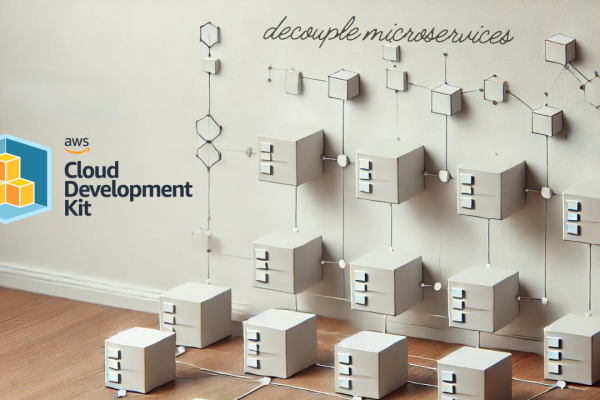The integration of DevOps practices within a cloud environment has become essential, by utilising the scalability, flexibility, and on-demand resources of the cloud, organisations can streamline their development processes, improve collaboration, and improve their deployment capabilities. This article explores the key components of implementing DevOps practices in a cloud environment, including CI/CD pipelines, automated testing, infrastructure as code, monitoring and logging, and fostering a collaborative culture.
Continuous integration and continuous deployment (CI/CD) pipelines
Effective management of containerised applications involves integrating infrastructure automation tools (such as Kubernetes, Ansible, and Chef) with CI/CD platforms (such as Jenkins, Bamboo, and GoCD). This integration enables efficient configuration management, improves fault tolerance, supports continuous monitoring, and facilitates streamlined software updates and deployments. Let’s have a closer look at them.
Continuous integration (CI)
CI is the practice of frequently integrating code changes into a shared repository, where each integration is automatically verified by a build and automated tests. This practice helps identify bugs early in the development process, reducing the cost and effort required to fix them. Below you will find the tools and steps that you can use.
- Tools: Jenkins, GitLab CI, CircleCI, Travis CI.
- Steps:
- Developers commit code changes to a version control system (VCS) like Git.
- The CI tool detects the change and triggers a build process.
- Automated tests are run to verify the build.
- If the build passes, it is ready for deployment.
Continuous deployment (CD)
CD extends CI by automatically deploying the integrated code changes to production. This practice ensures that the latest code is always in a deployable state. Below you will find the tools and steps that you can use.
- Tools: AWS CodePipeline, Azure DevOps, Google Cloud Build.
- Steps:
- After passing CI, the build is deployed to a staging environment.
- Additional tests are conducted in staging.
- If all tests pass, the build is deployed to production automatically.
Implementing CI/CD pipelines in a cloud environment offers several advantages, such as the ability to scale, build and test resources dynamically, reduced infrastructure maintenance, and the ease of integrating with cloud-native services. Cloud providers often offer comprehensive CI/CD services that integrate with other cloud resources, making it easier to manage the entire pipeline.
Microservices architecture
Microservices architecture is a design approach to software development where a large application is composed of small, independent services that communicate with each other through well-defined APIs. Each service is focused on a specific business function and can be developed, deployed, and scaled independently. Let’s check its key characteristics.
Key Characteristics of Microservices Architecture
Independent deployment
Each microservice can be developed, deployed, and scaled independently of the others.
This allows for continuous delivery and deployment, improving the agility of the development process.
Decentralized data management
Each microservice manages its own database, allowing for decentralized data management.
This can improve performance and scalability but requires careful handling of data consistency.
Technology diversity
Teams can choose different technologies and languages for different services based on what best suits the problem at hand.
This allows for flexibility but can also increase complexity in terms of integration and maintenance.
Fault isolation
Failures in one microservice do not necessarily affect the others, leading to better fault tolerance.
This improves the overall resilience of the application.
Scalability
Each service can be scaled independently, allowing for more efficient use of resources.
This is particularly useful for services with varying loads.
Tools and technologies
- Containers: Docker, and Kubernetes for deploying and managing microservices.
- API gateways: Kong, Zuul for routing requests to appropriate services.
- Service meshes: Istio, Linkerd for managing service-to-service communication.
- Monitoring and Logging: Prometheus, ELK Stack (Elasticsearch, Logstash, Kibana) for monitoring and logging.
Automated testing
Automated testing is crucial in a DevOps pipeline to ensure that new code changes do not break existing functionality and that the software behaves as expected. Let’s have a look at the types of automated tests as well as the tools and implementation for them.
Types of automated tests:
- Unit tests: Test individual components or functions.
- Integration tests: Test the interaction between integrated components.
- End-to-end tests: Test the complete workflow of an application from start to finish.
- Performance tests: Ensure the application meets performance requirements.
Tools:
- Unit testing: JUnit, NUnit, Pytest.
- Integration testing: Postman, SoapUI.
- End-to-end testing: Selenium, Cypress.
- Performance testing: JMeter, Gatling.
Implementation:
- Write test cases for different components and functionalities.
- Integrate these tests into the CI/CD pipeline.
- Use cloud-based testing services to scale and parallelise test execution.
Cloud environments provide the capability to run large numbers of tests in parallel, significantly speeding up the feedback loop. Additionally, cloud-based testing platforms can simulate various environments and configurations, ensuring that the application works correctly across different scenarios.
Infrastructure as Code (IaC)
IaC allows organisations to manage and provision computing resources through machine-readable definition files, rather than physical hardware configuration or interactive configuration tools.
Benefits:
- Consistency: Ensures that the same configuration is used across all environments.
- Scalability: Easily scale infrastructure up or down.
- Reproducibility: Quickly replicate environments for testing or deployment.
Tools:
- Terraform: A tool for building, changing, and versioning infrastructure safely and efficiently.
- AWS CloudFormation: Automates the setup of AWS resources.
- Azure Resource Manager (ARM) Templates: Automates the deployment of Azure resources.
Implementation:
- Define infrastructure configurations in code using IaC tools.
- Store these configurations in a VCS.
- Use CI/CD pipelines to automate the provisioning and updating of infrastructure.
IaC also enables the practice of immutable infrastructure, where servers are replaced rather than updated, ensuring a consistent and predictable environment. This approach minimises configuration drift and simplifies troubleshooting.
Monitoring and logging
Effective monitoring and logging are critical to maintaining the health and performance of applications in a cloud environment. Below we will explain the purpose of each as well as the implementation.
Monitoring:
- Purpose: Track the performance and availability of applications and infrastructure.
- Tools: Prometheus, Grafana, AWS CloudWatch, Azure Monitor.
Logging:
- Purpose: Record system and application logs for troubleshooting and analysis.
- Tools: ELK Stack (Elasticsearch, Logstash, Kibana), Splunk, Fluentd.
Implementation:
- Set up monitoring tools to collect metrics from various sources.
- Define alerting rules to notify the team of any issues.
- Implement centralised logging to aggregate logs from different services.
- Use dashboards to visualise metrics and logs for quick insights.
Cloud environments offer robust monitoring and logging services that integrate perfectly with other cloud resources. These services can automatically scale to handle the volume of data generated by large, distributed systems, providing comprehensive visibility into application performance and health.
Fostering a collaborative culture
A successful DevOps implementation requires a shift in organisational culture to promote collaboration between development and operations teams. Next, we will talk about some of those strategies and their implementation.
Strategies:
- Shared responsibility: Encourage shared ownership of the entire application lifecycle.
- Cross-functional teams: Form teams that include members from both development and operations.
- Continuous feedback: Implement mechanisms for continuous feedback between teams.
- Training and workshops: Conduct regular training sessions to keep teams updated on DevOps practices and tools.
Implementation:
- Organise regular stand-up meetings to discuss ongoing work and challenges.
- Use collaboration tools like Slack, Microsoft Teams, and Jira to facilitate communication.
- Celebrate successes and learn from failures to continuously improve processes.
Fostering a DevOps culture in a cloud environment also involves embracing practices such as continuous learning. Teams should be encouraged to experiment and innovate the cloud’s flexibility to quickly test and iterate on new ideas.
Adopting a DevOps culture
Transitioning to a DevOps approach involves significant cultural change alongside technical advancements. Embracing a DevOps culture focuses on fostering collaboration, transparency, and a commitment to continuous learning. It’s about creating an environment that encourages teams to experiment, learn from their mistakes, and continually be able to improve. Investing in training, tools, and practices that uphold these values is essential for achieving sustained success in your DevOps initiatives.
By contacting Chakray, you’ll benefit from our extensive experience and proven strategies for fostering a DevOps culture. We are committed to helping you create an environment where collaboration, transparency, continuous learning, and improvement thrive, leading to sustained success in your DevOps initiatives. Let us guide you through this transformative journey and help you discover the full potential of DevOps for your organization.
Conclusion
Implementing DevOps practices in a cloud environment involves integrating CI/CD pipelines, automated testing, infrastructure as code, monitoring, and logging, all while fostering a culture of collaboration. By using these practices and tools, organisations can achieve faster development cycles, higher quality releases, and improved operational efficiency. Adopting DevOps in the cloud is not just a technical change, but a cultural one, requiring commitment and collaboration across all teams.
Even though DevOps practices may seem straightforward and intuitive, successfully adopting them requires considerable time and effort. I require commitment and continuous improvement. Do you have any questions? Let our team of experts contact you!
Contact our team and discover the cutting-edge technologies that will empower your business.

Talk to our experts!
contact us





